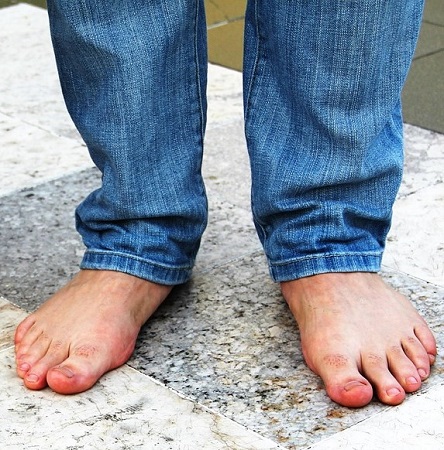 Perhaps you are struggling with sagging eyelids, puffiness, excess skin, or aging signs like fine lines around your eyes. You have heard about Blepharoplasty and wondering whether it can refresh your looks and improve your vision.
Perhaps you are struggling with sagging eyelids, puffiness, excess skin, or aging signs like fine lines around your eyes. You have heard about Blepharoplasty and wondering whether it can refresh your looks and improve your vision.
Well, you are not alone! Before you book that consultation, let us first explore everything you need to know about blepharoplasty to help you decide whether it is right for you.
What Is Blepharoplasty?
Before digging into the technical bits of Blepharoplasty, it is best to start with what the procedure means. Well, it is simply a cosmetic or functional surgery that removes excess skin, fat, or muscle from the upper and or lower eyelids. Think of it as a little tune-up for your eyes to reduce puffiness, lift saggy lids, and help you look more awake.
While many people in New Jersey choose it for aesthetic reasons, Blepharoplasty can also be done to improve your vision especially if you are experiencing droopy eyelids. It is a quick and manageable outpatient procedure that leaves long-lasting results! To be precise, you can enjoy the refreshed appearance for many years, sometimes even a decade or more.
Are There Any Risks Involved?
It is natural to interrogate any surgery, especially those that concern sensitive areas like your eyelids. You want the surgery to be smooth and effective so that you can go back to your routine. While blepharoplasty is a safe and effective procedure, you probably expect some risks as you would for any surgery.
However, complications are relatively far and in between, especially with proper care and if you work with an experienced surgeon.
Some of the possible side effects include temporary dryness, sensitivity to light, swelling, or uneven healing. It is rare to experience cases like difficulty in closing your eyes completely or changes in your vision. Most side effects, if they occur, are mild and temporary. However, the best way to set yourself up for a smooth experience is to follow your surgeon’s pre- and post-op instructions carefully.
Who Makes a Good Candidate for Blepharoplasty?
Perhaps you are tempted to think Blepharoplasty is just for celebrities or older adults. Well, you couldn’t be more wrong! Blepharoplasty suits anyone bothered by sagging eyelids, puffiness, or under-eye bags. Whether you are young or old and want to fine-tune your eye appearance, you are a candidate for Blepharoplasty.
Often, certain factors motivate you to undergo Blepharoplasty. Think about genetics and noticeable age-related changes! Again, imagine vision interference due to sagging skin or eyelid puffiness. These reasons, among others, can make you an ideal candidate for Blepharoplasty.
However, you should consult a board-certified plastic or oculoplastic surgeon to help determine if this is the right option for you. You can thus find a qualified surgeon in a reputable clinic for blepharoplasty in New Jersey. Generally speaking, the initial conversation between you and your surgeon should be warm and honest. Remember, you are doing it for yourself and not to meet anyone else’s expectations.
What Happens During the Procedure?
Well, like any other medical procedure, knowing what to expect during Blepharoplasty can ease your nerves and help you walk into surgery day feeling calm, confident, and prepared.
This procedure is usually done under local anesthesia with sedation or general anesthesia. Your surgeon makes tiny, precise incisions in the natural folds of your eyelids to minimize visible scarring. From there, they carefully remove or reposition excess fat, trim away extra skin, and tighten underlying muscles.
Generally, the whole surgery typically takes 1 to 2 hours, depending on whether you are treating the upper lids, lower lids, or both. However, you should note that it is a very detail-oriented work. The good news is that you should expect that the surgeon will explain each step clearly before the procedure.
What Can You Expect During Recovery?
Recovery is one of the most important phases of any medical treatment and blepharoplasty is not an exception. Ideally, you want minimal recovery time to resume your activities without significant interruptions. Well, recovering from blepharoplasty is usually smoother than you would expect.
Right after surgery, you may experience some swelling, bruising, or mild discomfort. However, cold compressions and special ointments should help you sail through this short phase. Ideally, you should feel ready to return to regular activities in about 7 to 10 days or a few weeks if worse.
Nevertheless, your doctor will give you gentle guidelines such as avoiding heavy lifting or intense workouts for a smoother recovery. You will also need to keep your eyes protected from sun and wind for a little while. Remember, patience is key and your eyes will gradually reveal a brighter, more refreshed look.
Wrapping up
If tired eyes are making you feel older than you are, or if sagging lids are blocking your vision and impacting your daily life, blepharoplasty can be your game-changer. This procedure is not about vanity but about your comfort, self-expression, and well-being. Talk to a reputable surgeon and get all your questions answered. If it feels right, don’t hesitate to transform your appearance with blepharoplasty.







